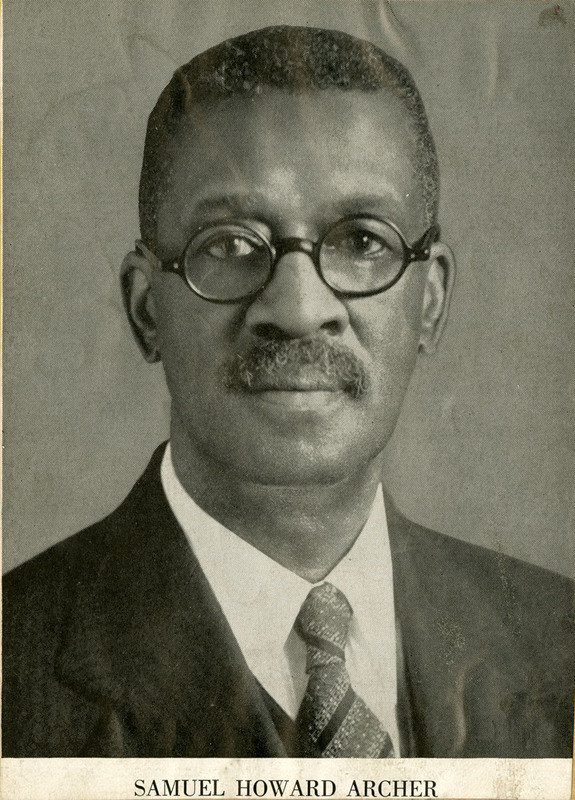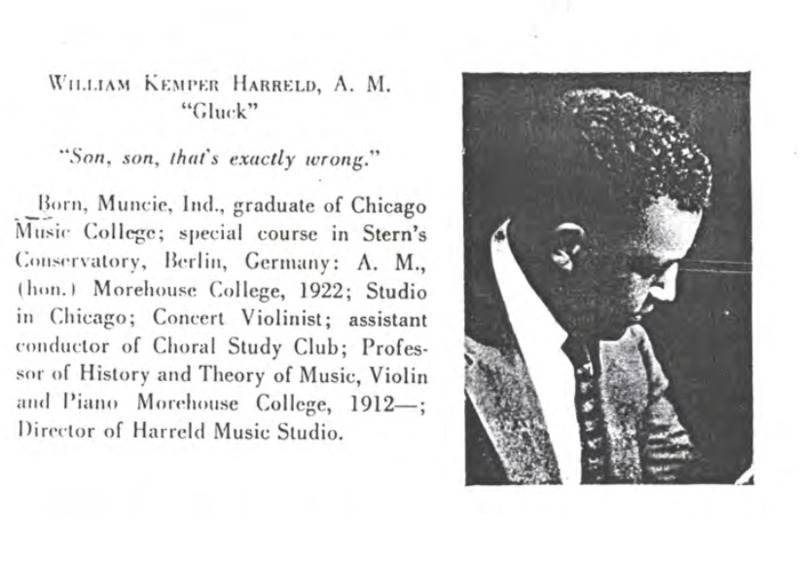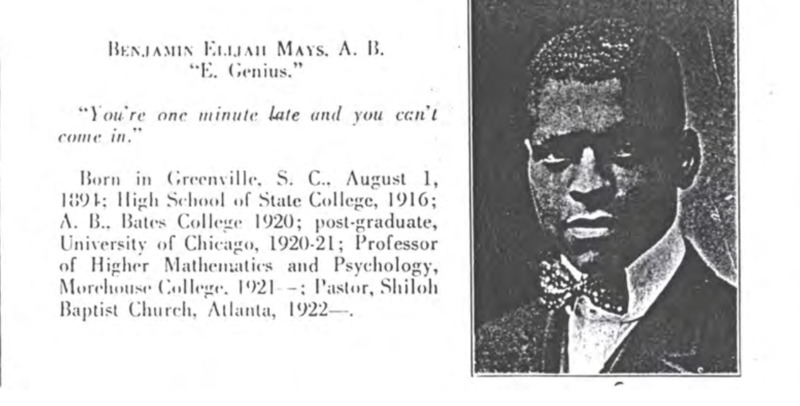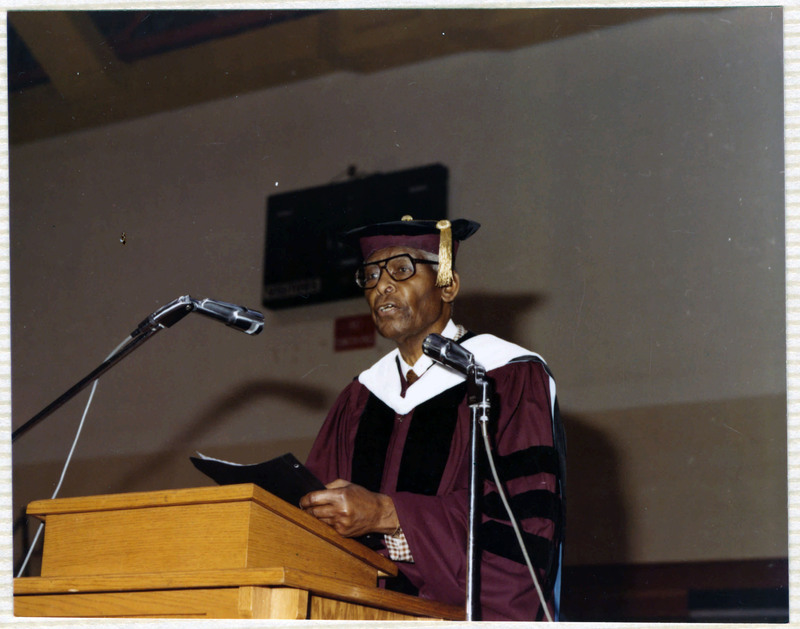Key Faculty
Dr. Samuel Archer
Dr. Samuel Howard Archer (1870 – 1941), who became fondly known as "Big Boy", received his early childhood education at the Peabody Public School in Petersburg, Va. and continued on to the Wayland Normal School (Moreland, M. 1949). Archer began his college education at Colgate University in 1898 and gained a reputation as a Scholar, Orator, and Athlete (Moreland, M. 1949). While at the Baptist Institution, Archer studied Logic, Ethics, the Teachings of Jesus Christ, the New Testaments and Church History and he received his bachelor’s degree in 1902. Archer was a member of many organizations such as a charter member of the Atlanta chapter of Sigma Pi Phi Fraternity, inc. (Kappa Boulé,1920) and Omega Psi Phi Fraternity, inc. (Eta Omega, 1926).
In 1906, he went on to become a Professor of mathematics at Morehouse College. He also served in the capacity of Football Coach and one of the first Deans of the College (Brawley was the other) (Moreland, M. 1949). Archer gave Morehouse the colors of Maroon and White to reflect his own Alma Mater, Colgate University. On July 1, 1931, The American Baptist Home Mission Society announced that Samuel Howard Archer was elected President of Morehouse College (Jones, E. 1967). At this point, Dr. Archer had already served at Morehouse for twenty-six years, during Dr. Hope's administration and the last year of Dr. George Sales' administration. During his thirty-six (36) year tenure at Morehouse, Archer gained the reputation of being one of the greatest educators of all time (Jones, E. 1967).
Marc Moreland in his article "Samuel Howard Archer: Portrait of a Teacher" Phylon, (1949) says "Dr. Archer had a rare talent for handling young men. Of impressive appearance and of wit as sharp as the fine edge of a seldom pleasure, he was, to his boys, as much man as any of them and a scholar who could at once amuse and instruct. Here indeed was a teacher who won young men and influenced them for good" (Moreland, M. 1949).
Kemper Herreld
Kemper Harreld (1885–1971), born William Kemper Harreld in Muncie, Indiana, was a renowned African-American concert violinist (De Lerma, D. 2011). He was also a pianist, organist, and graduate of Chicago Musical College. Mr. Herreld held membership in Omega Psi Phi Fraternity, Inc. (Eta Omega) and Sigma Pi Phi Fraternity, Inc (Kappa Boulé).
Harreld officially founded the Morehouse College Glee Club and assumed leadership when he joined the College’s music faculty in the fall of 1911 (Jones, E. 1967). Mr. Harreld became both, Chair of the Music Department and Director of the Glee Club. After faithfully serving for forty-two years, he retired in 1953 (Jones, E. 1967). Mr. Harreld was responsible for beginning the Glee Club’s strong legacy of excellence that has since been passed down to all members of the organization (Jones, E. 1967). Additionally, Harreld also founded the Spelman College Glee Club in 1925 and served as its first director. For some time, he served simultaneously as the chair of the music department of Spelman College as well as Morehouse (Jones, E. 1967).
Lastly, Harreld was married to Claudia White Harreld (daughter of Morehouse College Founder, William J. White). Claudia White Harreld was one of the first two College graduates of Spelman College in 1901 and had a daughter named Josephine Harreld (Elmwood Historic Cemetery. n.d.). Josephine Harreld graduated from Spelman College (1933), Julliard School of Music (1935), and Radcliffe College (1936). She was a member of Alpha Kappa Alpha Sorority, Inc. and married Thomas William Love (Omega Psi Phi) (Elmwood Historic Cemetery. n.d.).
Dr. Benjamin Elijah Mays
Benjamin Elijah Mays (1894 – 1984) was born in a small town in South Carolina, to parents who had been born in slavery and freed at the end of the Civil War (Mays, 2003). Mays excelled as a student from an early age and was driven throughout his youth by what he termed "an insatiable desire to get an education." In this he was in conflict with his father, who felt Mays' time would be better spent in working on the family's farm, but was steadily supported by his mother, who could not read or write (Mays, 2003). Beginning in a one-room rural schoolhouse, he absorbed all he could from a succession of local schools, graduating from the high school at Orangeburg's State College and entering college at Virginia Union in Richmond, Virginia (Cook, 2009). Determined to continue his university education outside the segregated South, Mays entered Bates College in Lewiston, Maine in 1917. Despite being one of a very few black students at Bates, Mays encountered little racial prejudice there and felt that his teachers and peers treated him as an equal. He wrote of his years at Bates, "For the first time...I felt at home in the universe" (Mays, 2003).
Influenced by one of his high school teachers, Mays had set his sights on the University of Chicago for graduate study and entered the Divinity School there in 1921. He interrupted his graduate studies multiple times to accept teaching jobs, including one at Morehouse College, and positions with the National Urban League and the YMCA, but he always returned to his chosen course, earning his master's degree in 1925 and his doctorate in 1935 (Cook, 2009). During these years, he was also ordained into the Baptist ministry. From 1934 to 1940, Mays served as dean of the Howard University School of Religion and then moved on to the presidency of Morehouse College, a position he held with distinction for the next quarter of a century (Cook, 2009).
Mays spoke early and often against segregation and for education. He was a model for one of his Morehouse students, Martin Luther King, Jr., and he served the young minister as an unofficial senior advisor. Mays gave the benediction at the close of the program at the 1963 March on Washington, as well as the eulogy at King's funeral in 1968 (Cook, 2009). Among his many books were the first sociological study of African-American religion, The Negro's Church, published in 1933; The Negro's God, of 1938; Disturbed About Man, of 1969; and his autobiography Born to Rebel, of 1971 (Cook, 2009). Mays died in 1984 and is buried on the grounds of the Morehouse campus.



